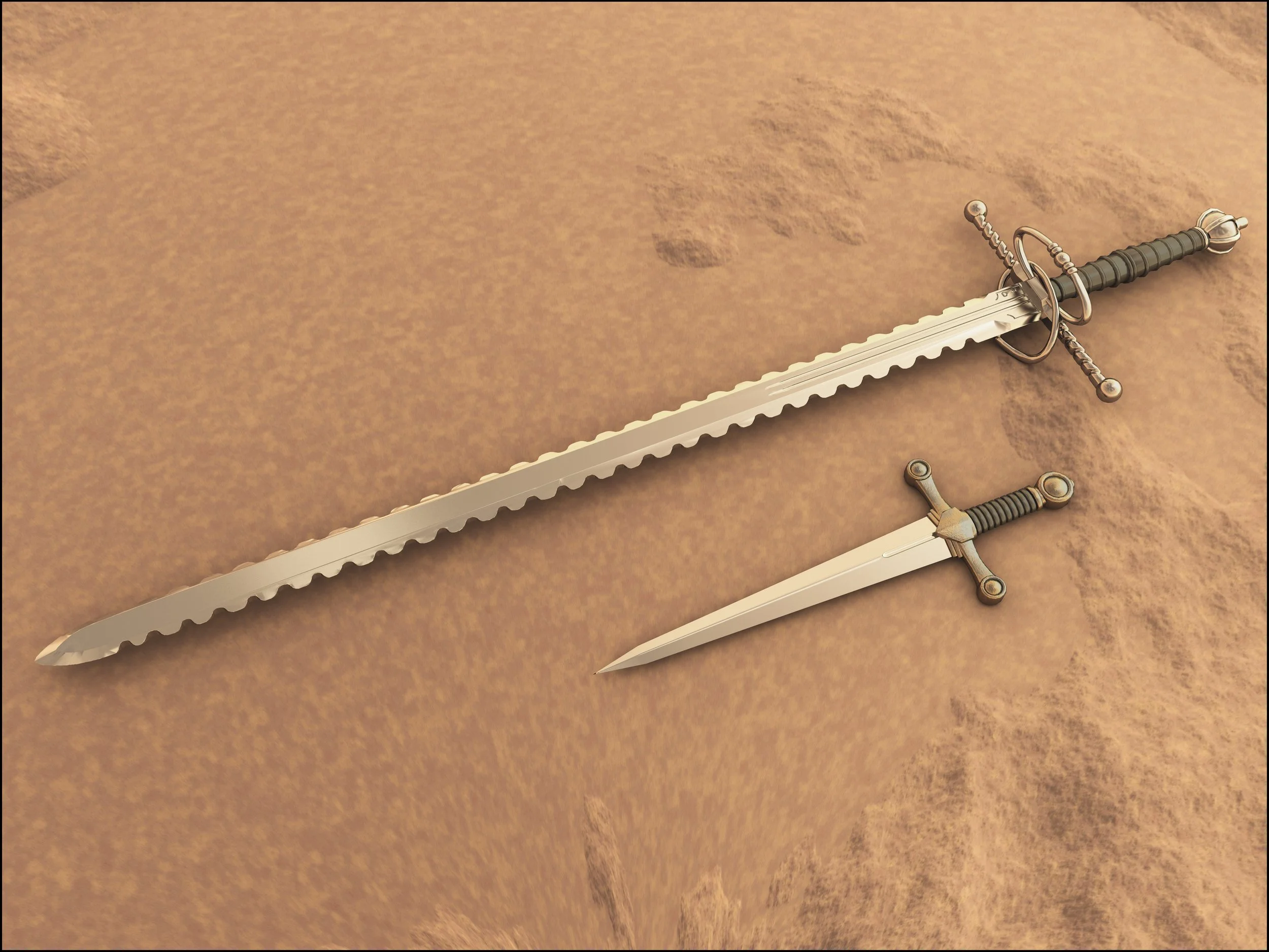Forgotten Weapons: Exploring Obscure Swords and Blades from History
In the annals of human history, weapons have always played a crucial role in shaping civilizations and determining the outcome of conflicts. While certain iconic weapons like the Roman gladius or the Japanese katana have gained widespread recognition, there exists a vast array of lesser-known swords and blades that have been overshadowed by their more famous counterparts. In this article, we embark on a journey to uncover the hidden gems of history, exploring forgotten weapons that possess unique designs, fascinating stories, and remarkable craftsmanship.
The Flamberge
(Image credit: Manaexlegion)
The Flamberge, also known as the "flame blade," is a remarkable sword distinguished by its undulating and wavy blade design. This unique feature not only makes it aesthetically intriguing but also serves a functional purpose on the battlefield. The wavy nature of the blade creates vibrations upon impact, making it more difficult for opponents to parry or block incoming strikes. Its origin can be traced back to medieval Europe, where it found favor among certain knightly orders.
The Shotel
Native to Ethiopia, the Shotel is a curved sword renowned for its distinctive shape and deadly effectiveness. Its forward-curving blade and sickle-like design grant it the ability to strike around shields and armor, making it a formidable weapon in close-quarter combat. The Shotel's prominence can be traced back to ancient civilizations in the Horn of Africa, and it continued to be used through the medieval era. Today, it remains an intriguing testament to the region's rich martial heritage.
The Urumi
(Image credit: Zzvet)
Originating from the southern regions of India, the Urumi is a flexible sword with a long and narrow blade. Unlike traditional rigid swords, the Urumi is crafted using flexible steel, allowing it to be coiled like a whip. This unique construction grants the wielder exceptional versatility in combat, enabling them to strike opponents from unexpected angles. The Urumi demands extensive training and expertise due to its potential risks, making it an exotic and deadly weapon.
The Kampilan
Originating from the southern Philippines, the Kampilan is a sword of grandeur and power. This large-bladed weapon boasts an elongated, double-edged design, often featuring intricate carvings and decorative elements. Historically associated with elite warriors and noble leaders, the Kampilan symbolizes strength and authority. Its impressive size and imposing appearance made it a symbol of prestige and a formidable weapon in battle.
The Zulfikar
The Zulfikar holds deep significance in Islamic history and is widely associated with Ali ibn Abi Talib, the cousin and son-in-law of Prophet Muhammad. This legendary sword features a unique bifurcated blade design, resembling a forked lightning bolt. Revered as a symbol of bravery and heroism, the Zulfikar holds immense cultural and religious value. It stands as a testament to the rich legacy of Islamic warriors and their impact on the course of history.
The Macuahuitl
(Image credit: Wikimedia Commons)
The Macuahuitl is a fearsome weapon hailing from ancient Mesoamerica, particularly used by the Aztec civilization. It consists of a wooden handle adorned with embedded sharp obsidian blades. Known for its devastating cutting power, the Macuahuitl struck fear into the hearts of opponents on the battlefield. Despite its lack of metal, this weapon exhibited extraordinary efficiency and is a testament to the resourcefulness and ingenuity of ancient civilizations.
Exploring the forgotten weapons of history unveils a fascinating tapestry of diversity, craftsmanship, and cultural significance. From the serpentine Flamberge to the deadly Urumi, these obscure swords and blades offer a glimpse into the ingenuity and artistry of past civilizations. Their stories deserve to be rediscovered and shared, as they enrich our understanding of humanity's evolution. By shedding light on these forgotten weapons, we pay homage to the master craftsmen and warriors who shaped our world with their skill, courage, and unwavering dedication.
Want us to drop more historical weaponry knowledge on you? Follow BRUTE de FORGE now across all social media platforms: Twitter (@BruteDeForge), Instagram (@brutedeforgedotcom), and Facebook (facebook.com/BruteDeForge).
TRENDING
About The Author
More from Jeff















